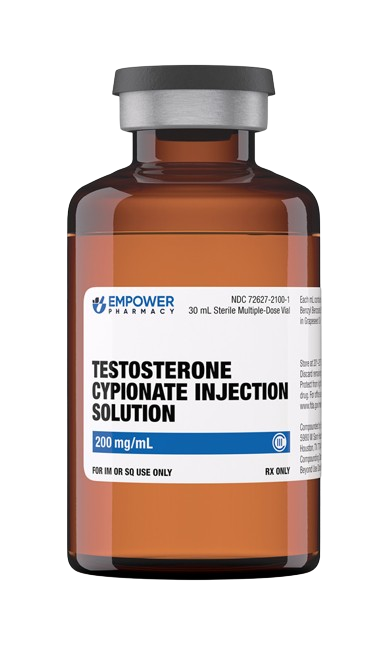Testosterone therapy can lead to a variety of adverse reactions and side effects,
particularly when used in prolonged or high doses. These side effects can vary based on
gender, age, and the specific testosterone formulation used.
Male Patients:
- Feminization: Prolonged testosterone therapy can cause feminization in males, including gynecomastia (breast enlargement) and mastalgia (breast pain), especially in those with liver disease. These effects are usually reversible.
- Sexual Side Effects: Testosterone therapy can lead to changes in libido (both increases and decreases). In some cases, it can cause priapism (prolonged erections) or impotence. Benign prostatic hyperplasia (BPH) and prostate abnormalities have been reported, along with increased prostate-specific antigen (PSA) levels, which may signal prostate issues.
- Urinary and Reproductive Effects: Prostate disorders, nocturia (frequent urination at night), and other urinary symptoms are associated with testosterone therapy. It can also inhibit spermatogenesis, leading to decreased fertility.
- Cardiovascular Risks: There is ongoing investigation into the possible increased risk of severe cardiovascular events (e.g., myocardial infarction, stroke) associated with testosterone use, particularly in older males or those with pre-existing heart conditions.
- Fluid Retention and Blood Pressure: Testosterone can cause fluid retention, leading to peripheral edema (swelling). It may also impact blood pressure, potentially leading to hypertension.
Female Patients:
- Virilization: Women receiving testosterone may experience virilization, which includes symptoms like acne, hirsutism (excess body hair), deepening of the voice, and clitoral enlargement. If not discontinued early, some effects may become irreversible.
- Menstrual Irregularities: Testosterone can disrupt the menstrual cycle, leading to amenorrhea (absence of menstruation) or oligomenorrhea (infrequent menstruation).
- Pregnancy Risks: Testosterone exposure during pregnancy can cause fetal harm, leading to varying degrees of virilization in the fetus.
General Adverse Effects:
- Dermatological Reactions: Application site reactions (e.g., erythema, pruritus, rash) are common with topical testosterone products. Acne and seborrhea are also reported due to increased sebaceous gland activity.
- Hepatic Dysfunction: Testosterone can lead to liver issues, including elevated liver enzymes, cholestatic jaundice, or even life-threatening conditions like peliosis hepatis.
- Psychiatric and Neurological Effects: Some patients report mood alterations, including depression, anxiety, and aggression. Headaches, abnormal dreams, and insomnia have also been noted.
- Gastrointestinal and Musculoskeletal Issues: GI problems like diarrhea and vomiting, along with musculoskeletal pain and back pain, have been observed in some patients.
- Metabolic Effects: Testosterone can influence lipid profiles, potentially leading to hypercholesterolemia or hypertriglyceridemia. It also stimulates erythropoiesis, which can cause polycythemia (increased red blood cells), potentially leading to complications like dizziness, fatigue, or clotting issues.
Monitoring and Management:
- Regular monitoring of liver function, lipid profiles, hematocrit, and PSA levels is recommended for patients on long-term testosterone therapy. Dose adjustments or discontinuation may be necessary based on these parameters or the occurrence of adverse effects.
In conclusion, while testosterone therapy can be beneficial, it carries significant risks that require careful consideration and ongoing monitoring by healthcare professionals.


